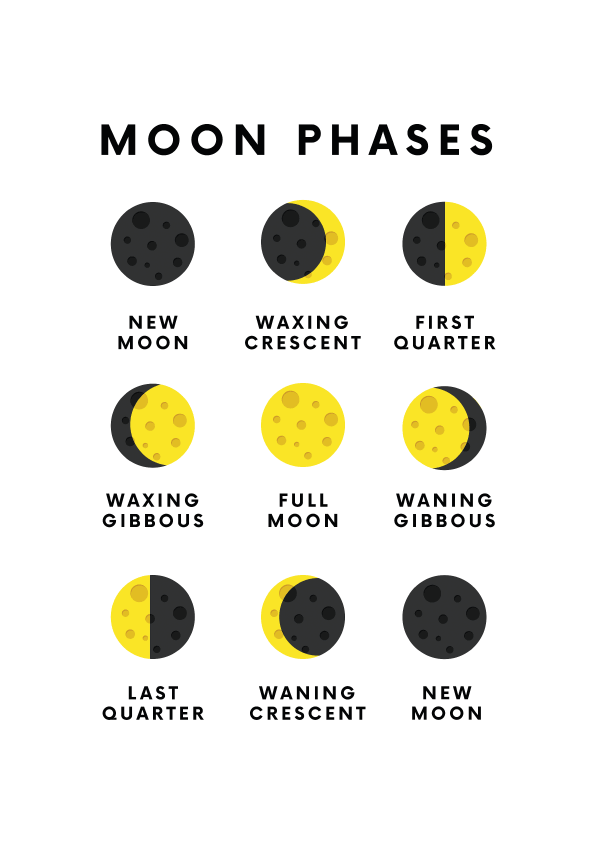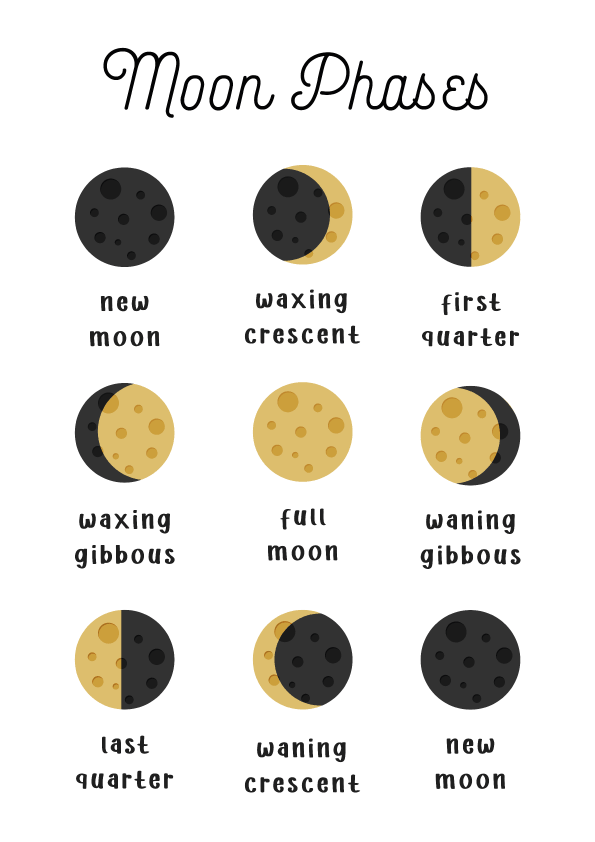Table of contents
This educational guide explains the different moon phases for kindergarten students and school-aged learners, breaking down the concepts presented in the provided document. The illustrated document displays the various phases the moon goes through as it orbits Earth, a foundational concept in astronomy. Understanding the moon’s cycle is a key part of early science education, helping kids grasp how objects in space interact and how light affects what we see from our planet. The guide’s simple visuals make it an ideal tool for teaching moon phases for kindergarten students and older children alike.
Grasping the Basics of Moon Phases for Kindergarten
The images in the provided document illustrate the eight moon phases for kindergarten students to learn. The cycle starts and ends with the new moon, where the moon appears completely dark from Earth. Following this, the moon begins to appear as a thin sliver of light during the waxing crescent phase. The term “waxing” means the illuminated portion is growing.
The next phase, the first quarter, shows exactly half of the moon lit up. From there, the moon continues to brighten into a shape known as the waxing gibbous. The climax of this growth is the full moon, when the entire face of the moon is visible and fully illuminated. This part of the cycle is perfect for teaching young children about patterns and the concept of change over time, making it a valuable tool for teaching moon phases for kindergarten students.

From Full to New: The Waning Moon Phases for Kindergarten
After the full moon, the cycle reverses, and the amount of visible light on the moon begins to decrease. This part of the journey is called “waning”. The waning gibbous is the first phase in this descent, with the moon still mostly lit up but with a noticeable shadow growing on one side. This is followed by the last quarter, where again, half the moon is illuminated, but on the opposite side from the first quarter.
As the moon continues to wane, it becomes a waning crescent, a thin sliver of light that gets smaller each night. The cycle concludes as the moon returns to its completely dark state, the new moon. The repeating pattern makes this an excellent topic for discussing cycles and predictability in nature, making it a valuable tool for teaching moon phases for kindergarten students.

The Importance of Teaching Moon Phases for Kindergarten
Understanding the moon’s cycle is crucial for young learners because it introduces fundamental scientific concepts in a visually engaging way. The provided document and its clear illustrations serve as an excellent resource for this. By observing the moon’s changes over a month, children can develop observational skills, learn about the Earth-moon system, and understand the relationship between light, shadow, and perception. It also lays the groundwork for more complex topics in astronomy and physics. The repetitive and predictable nature of the moon phases for kindergarten students provides a perfect opportunity to introduce concepts like orbital mechanics and celestial bodies in a simple, memorable format.
ABC for Kindergarten: The Ultimate Visual Resource for Learning the Alphabet
